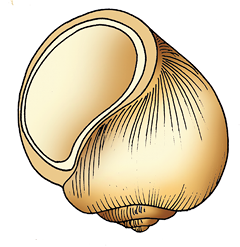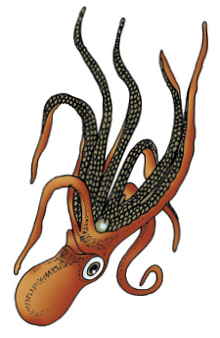This is the second largest animal phylum (Figure 4.13). Molluscs are terrestrial or aquatic (marine or fresh water) having an organ-system level of organisation. They are bilaterally symmetrical, triploblastic and coelomate animals.


Figure 4.13 Examples of Mollusca :(a) Pila (b) Octopus
Body is covered by a calcareous shell and is unsegmented with a distinct head, muscular foot and visceral hump. A soft and spongy layer of skin forms a mantle over the visceral hump. The space between the hump and the mantle is called the mantle cavity in which feather like gills are present. They have respiratory and excretory functions. The anterior head region has sensory tentacles. The mouth contains a file-like rasping organ for feeding, called radula.
They are usually dioecious and oviparous with indirect development.
Examples: Pila (Apple snail), Pinctada (Pearl oyster), Sepia (Cuttlefish), Loligo (Squid), Octopus (Devil fish), Aplysia (Sea-hare), Dentalium (Tusk shell) and Chaetopleura (Chiton).

© 2025 GoodEd Technologies Pvt. Ltd.